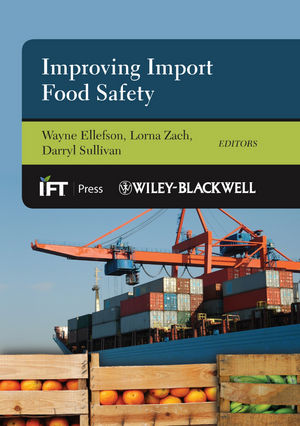Abrin – Another Poison Being Experimented with by Terrorists

Jamaah Ansharut Daulah (JAD) is an Islamic State-allied terrorist group unknown to most food defense professionals. Based in Indonesia, this group has recently been getting closer scrutiny by several governments outside Indonesia, including the U.S., because of the recent discovery of a plot to create bombs to be used by suicide bombers. Improvised explosive devices based on triacetone triperoxide (TTP)—the so-called “Mother of Satan”—have been used by terrorist groups for decades.[1] This investigation, however, turned up food defense implications.
JAD appears to have intended to use the bombs in a terror campaign that included at least some female suicide bombers (increasingly happening). The explosive power was intended to be made even stronger with the inclusion of other ingredients, indicating a sophisticated bombmaker. A new element was the inclusion of a poisonous ingredient called abrin. It is not the bombs, but the poison that causes concern.
Abrin is a natural poison, derived from the seeds of a noxious weed found in many parts of the world. Often called rosary pea or jequirity pea,[2] the seed yields a purified toxin that is similar in action to ricin. Ricin, a very significant poison, has interested terrorist groups for years.[3] Before the appearance of bombs laden with abrin, ISIS has in the past discussed poisoning food. Those discussions may have been motivated in part by having fallen victim themselves (45 dead) to a successful plot involving a poisoned Ramadan meal served in Mosul, Iraq, most likely by people working with the Kurds.[4] Although neither abrin nor ricin was used to poison the ISIS terrorists, the group nevertheless learned food could be used as a terrorist weapon. They began discussing the potential of poisoned food as an attack vector aimed at the West.
Oddly, although the seeds are extremely toxic, the plant itself is “…valued in various cultures, especially its seeds and roots, for a wide range of uses including medicine, food, beverage sweetener, licorice substitute, ornamental plant, jewelry and beads, weighing unit, and for traditional cultural and spiritual purposes…”.[5] Translated into food defense speak—that means the plant is commonly available in most parts of the world. Not good news!
A terrorist group directly associated with ISIS intended to use abrin in conjunction with improvised explosives devices, meaning the group was trying to produce a crude chemical weapon. Explosives are not an ideal way to deliver abrin. The fireball’s heat would have been intense, making it probable that much of the toxin would have been incinerated. More relevant is the new attention being paid by this terrorist group to the poison itself, which likely will draw the attention of other terrorist groups. Its seeds, like those of ricin, are not difficult to obtain, but it does take some finesse to produce a concentrated poison. Terrorist groups are known to experiment with new malevolent substances, and often do so until they perfect their use.
In its purified forms, abrin appears as a yellowish-white, water-soluble powder that can be converted into a tablet. The poison is environmentally stable and persistent, meaning it can remain highly toxic even if exposed to very hot or cold temperatures. “Death from abrin poisoning could take place within 36 to 72 hours of exposure, depending on the route of exposure (inhalation, ingestion, or injection) and the dose received,”[6] according to the U.S. Centers for Disease Control and Prevention. “Someone who swallows a significant amount of abrin would develop vomiting and diarrhea that may become bloody. Severe dehydration may result, followed by low blood pressure. Other signs or symptoms may include hallucinations, seizures, and blood in the urine. Within several days, the person’s liver, spleen, and kidneys might stop working, and the person could die.”[6]
As is the case for ricin, there is no antidote for abrin poisoning. Initial signs for abrin poisoning usually occur within 8 hours but may be delayed by as much as 3 days.[6]
Like ricin, abrin will never be a weapon of mass destruction but could be used by a terrorist group as a weapon of “mass disruption.” The seeds are toxic, dramatically so if ingested, but a terrorist organization would most likely purify the poison to ensure maximal effect. Small lots of food potentially could be poisoned, but poisoning even small lots would require both some degree of purification and preparation to successfully contaminate the food. Both elements increase the potential for detection, particularly if contamination was attempted inside a food processing plant. Because of the risk of detection, an intentional contamination scenario is far more likely to occur post-processing, perhaps even at the retail level, as in grocery store scenarios that have been discussed by ISIS.[7]
Like ricin, abrin scenarios are likely to involve a small number of victims, but that is enough to cause panic in the marketplace. Given that many retail food outlets have realized the potential for intentional contamination events, programs that include surveillance cameras have been implemented in many parts of the U.S. and Europe. Abrin is not sufficiently different from ricin to warrant a new program, but the poison’s new higher profile does indicate that the threat from intentional contamination is increasing, not decreasing.
Food defense planning and actual operations need to be reviewed regularly and adjusted as needed. Terrorist organizations support the idea that food can be used as an attack vector, and they have long realized the psychological effects caused by a terrorist event often outweigh the attack’s direct effects. Food corporations need to consider both the human costs and the potential brand damage of a food-related terrorist event, then respond proactively. The last thing any food related corporation needs to do is start developing an emergency response strategy and operational plan in the midst of a terrorist event.
Robert A. Norton, Ph.D., is chair of the Auburn University Food System Institute’s Food and Water Defense Working Group. He is a long-time consultant to the U.S. military, federal, and state law enforcement agencies. His blog, Bob Norton’s Food Defense Blog, can be found at aufsi.auburn.edu/fooddefense/blog/. He can be reached at nortora@auburn.edu or 334.844.7562.
References
1. cbrneworld.com/news/terror-group-plans-suicide-attacks-with-abrin-bombs.
2. Abrus precatorius is the scientific name for the plant, which is described as a “slightly woody vine, twining, much branched from the base, attaining 3 m in length. Stems green, cylindrical, puberulent, turning dark gray, rugose, glabrous and slightly flattened when mature…,” which produces bright red seeds, a single seed of which is toxic enough to kill an adult. (Source: www.cabi.org/isc/datasheet/1965).
3. www.independent.co.uk/news/uk/crime/isis-bomb-plot-uk-muslim-dating-ricin-attack-munir-mohammed-rowaida-el-hassan-uk-a8223786.html; www.independent.co.uk/news/uk/crime/isis-christmas-terror-attack-plot-couple-derby-explosives-old-bailey-bomb-ricin-online-dating-muslim-a8148061.html.
4. www.qasioun-news.com/en/news/show/10946/ISIS_fighters_die_after_eating_poisoned_Ramadan_meal_in_Iraq;
www.haaretz.com/report-45-isis-fighters-die-after-eating-poisoned-iftar-meal-1.5375640.
5. www.cabi.org/isc/datasheet/1965.
6. emergency.cdc.gov/agent/abrin/basics/facts.asp.
7. ent.siteintelgroup.com/Chatter/is-supporters-distribute-english-message-suggesting-to-poison-food-in-markets.html; www.newsweek.com/isis-supporters-call-poisoning-grocery-stores-us-and-europe-660750.
Looking for a reprint of this article?
From high-res PDFs to custom plaques, order your copy today!









